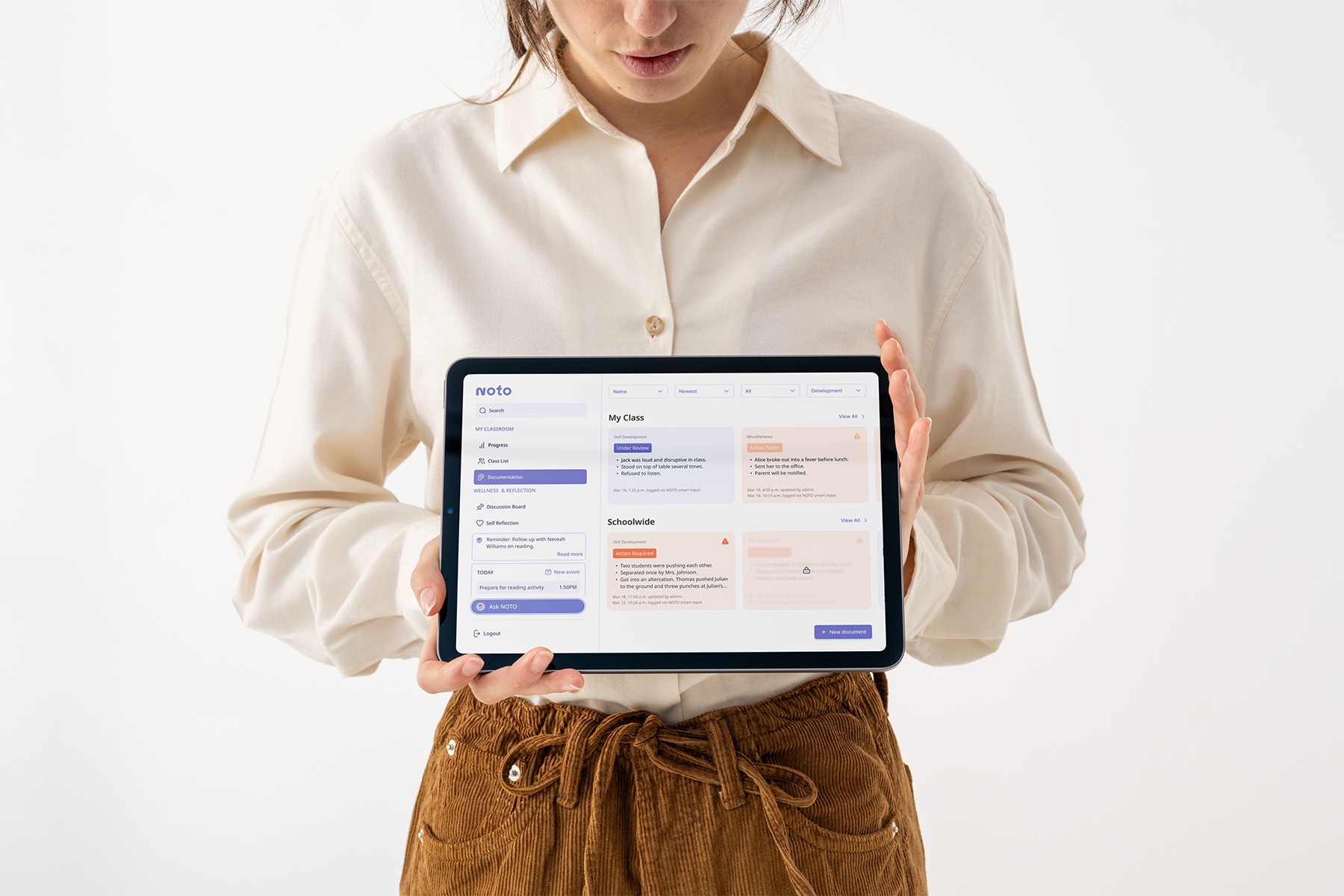Developing a smart documentation tool for early childhood educators
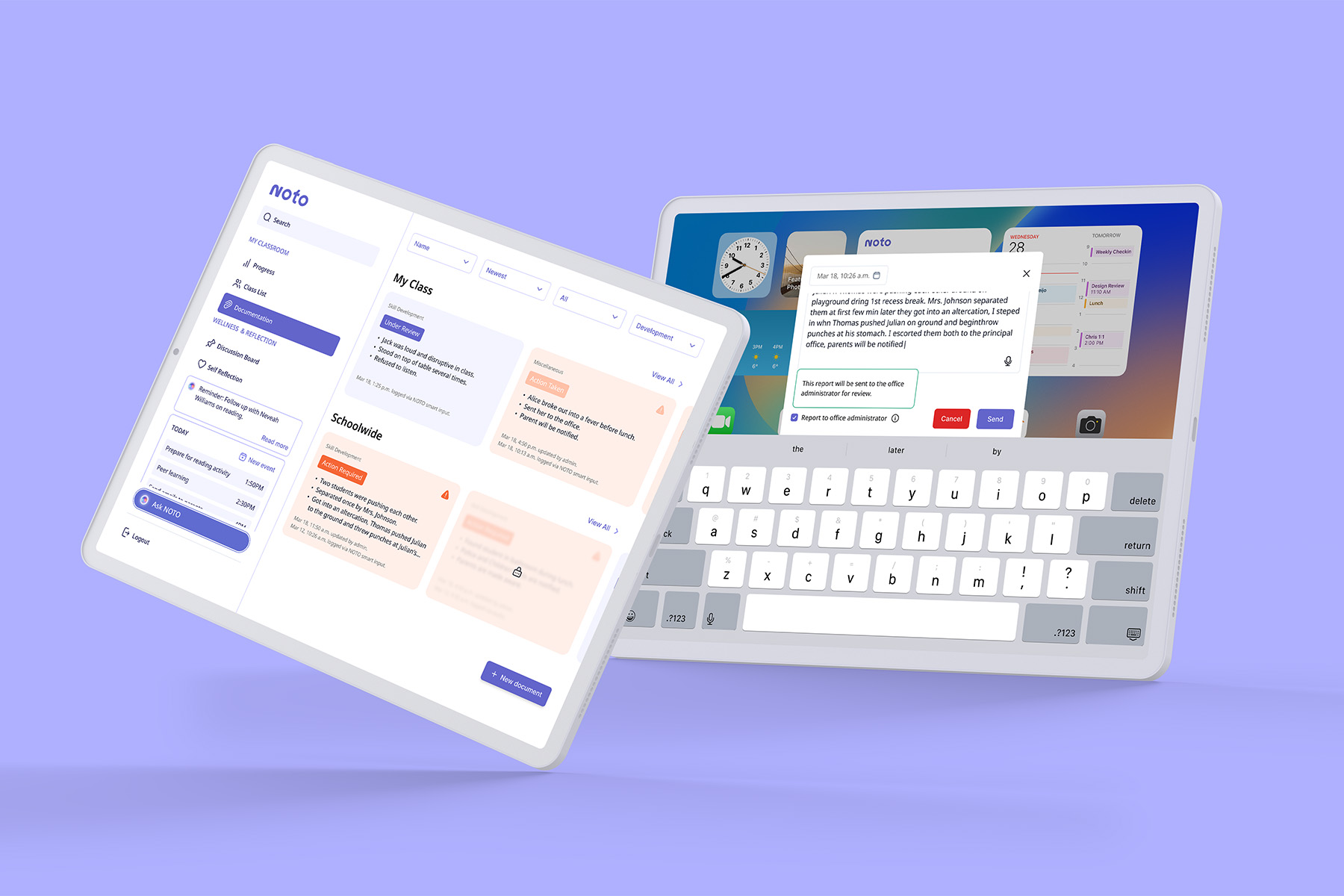
Overview
Neurodiversity is rising in today's classrooms, but fragmented support often prioritizes administrative needs and puts responsibility on already-overworked teachers to put together their own resources. After extensive research and conversations with educators, we designed NOTO to accelerate communication and provide accessible and practical support through a professional development dashboard, classroom management tools, smart documentation, and an AI assistant.
NOTO was developed as part of Red Thread Innovations' Purposeful Innovation mentorship and came in second place!
Team
Sketchy Solutions includes Marriane Angga, Trang Do (me!), Jade Guerin, Allen Lin, and Hailey Pham.
Role
UX/UI Researcher and Designer
Duration
Jan – Apr 2025 (14 weeks)
Problem space
Today's classrooms are more diverse than ever, but the support systems behind them have not kept up.
While inclusive education is widely promoted, many educators are left to implement it without consistent support staff, practical professional development, or actionable tools. The alarming rates of burnout and attrition reveal a system built on reactive workarounds instead of proactive infrastructure. Fragmented training, administrative overload, and inconsistent inclusion support leave teachers stretched thin and students underserved.
44%
of K-12 teachers report frequent burnout.
(Devlin Peck, 2025)
76%
of teachers report emotional exhaustion.
(Elka Jacobs-Pinson, 2025)
55%
of teachers plan to leave the profession early.
(NCES, 2022)
68%
cite workload as the main factor for stress.
(Heubeck, 2022)
Teachers do not need more platforms—they need support systems that understand their classroom realities.
While educators face escalating demands, most tools are built for administrators, not teachers. They focus on performance metrics and compliance, not empathy, real-time support, or inclusion. Our opportunity lies in this disconnect.
Meet NOTO
An AI-powered support system designed for the day-to-day reality of early childhood educators.
Designed with early childhood educators, NOTO offers teachers real-time support, inclusive learning strategies, and streamlined administrative tools. Whether tracking student growth, navigating Individual Education Plans, or exploring bite-sized professional development content, NOTO empowers educators to do what they do best—teach, connect, and care.
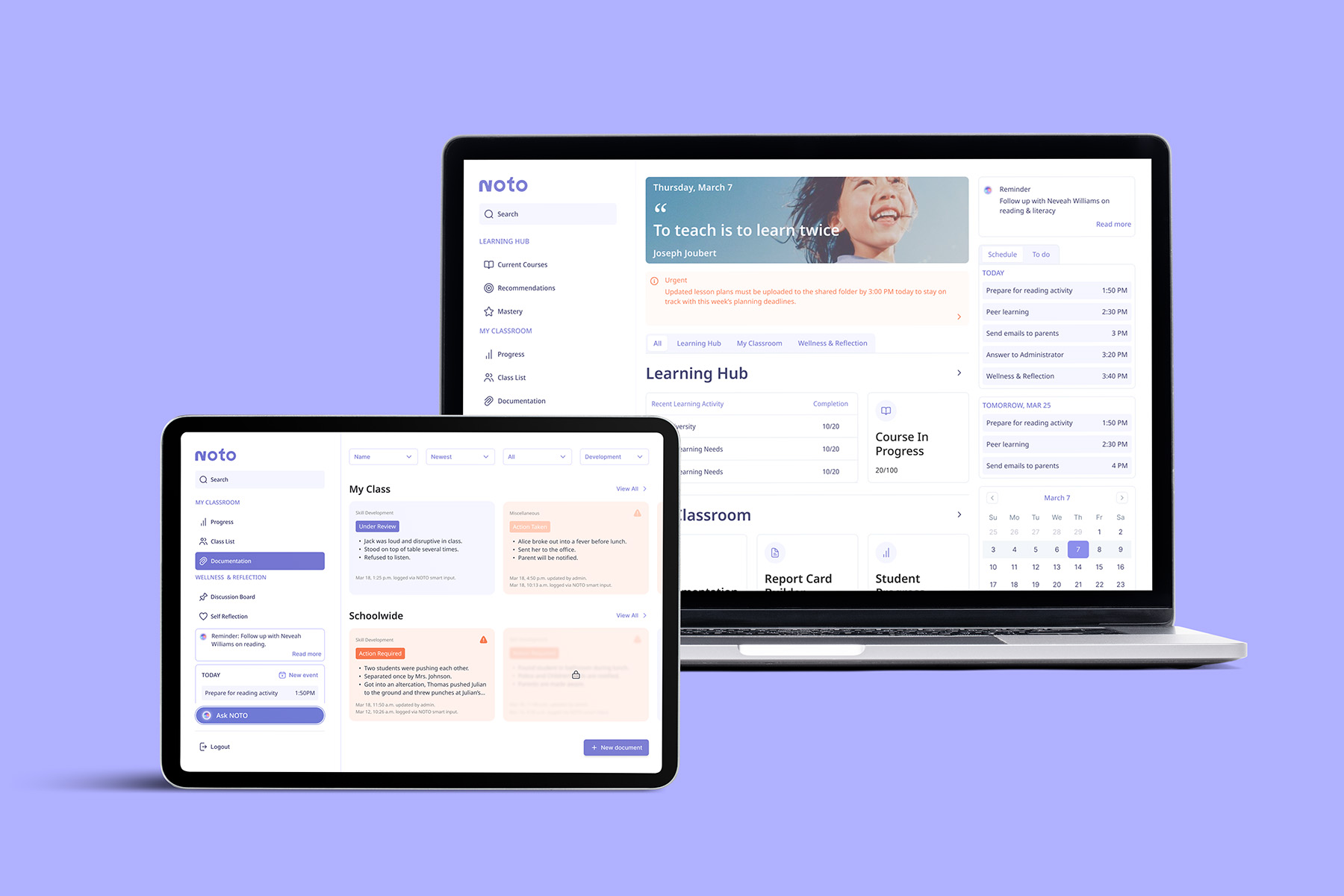
The documentation tool organizes brain dumps into insights—teachers can speak, snap, or type, and NOTO sorts it all.
NOTO's documentation feature accelerates notetaking and reports, allowing educators to reclaim lost time and reduce redundancy. Quick voice recordings and rough notes are distilled into structured outputs for report cards, logs, or communication with caregivers.
Research
Looking at trends in education technology and inclusivity in the classroom, we saw a gap in support for neurodivergence for both students and educators.
The growing emphasis on mental well-being and the importance of AI literacy highlight the need for supportive, adaptive learning environments. The strong desire for personalization and flexibility in education and increasing support for neurodivergent students is hindered by the digital divide and paywalls.
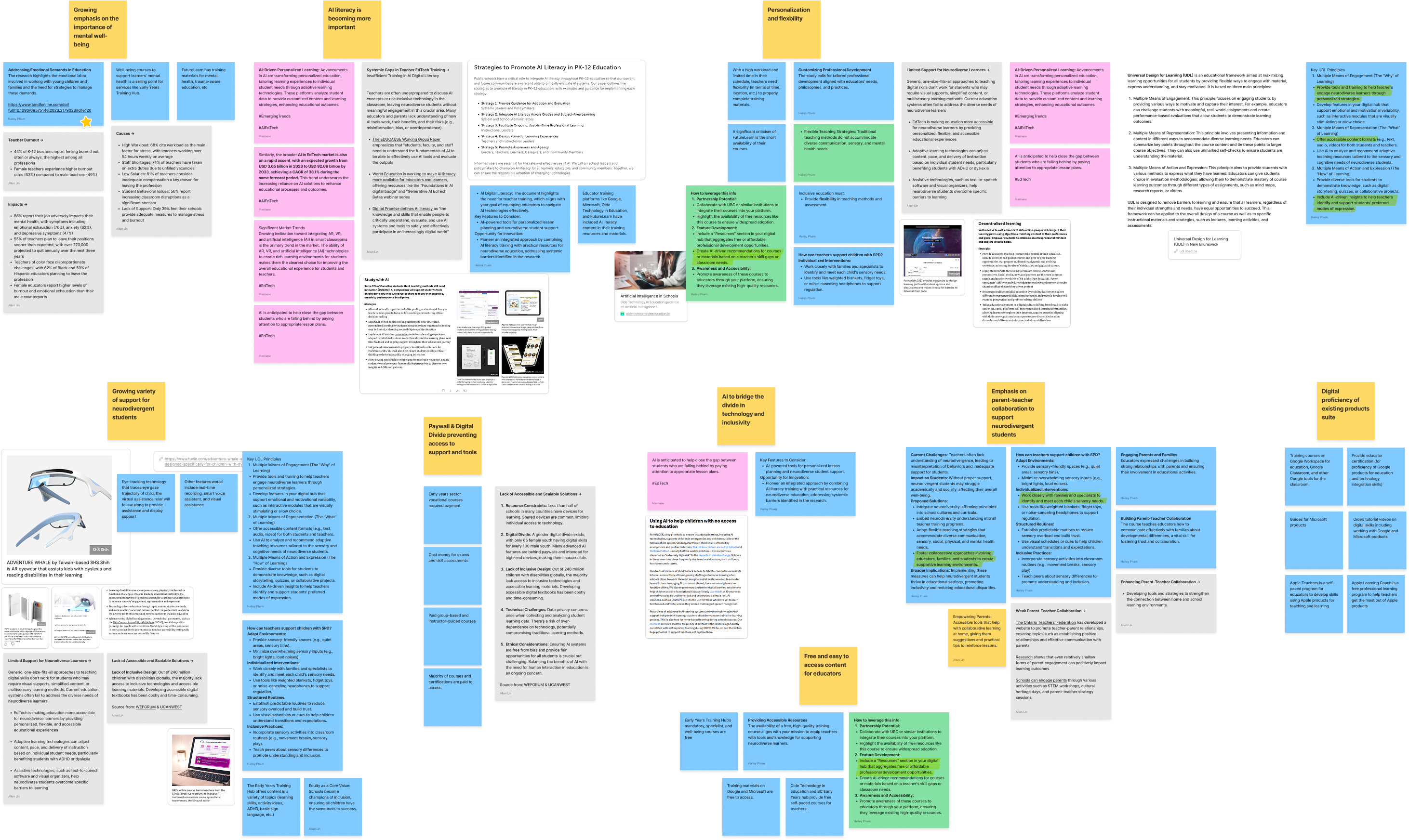
Online stories and real-life conversations revealed that educators find existing tools too rigid, too theoretical, or built with administrators rather than teachers in mind.
Impractical Traditional Training
Traditional professional development often feels irrelevant or inaccessible during the workday. During our primary research, over 60% of educators said their professional development felt disconnected from their classroom reality and was often completed “just to tick a box.”
Fragmented Management Systems
Teachers struggle to keep track of how each student is doing in fast-paced, ever-changing classrooms. Existing systems are fragmented, slow to update, or require too much clicking and cognitive load to be useful in the moment. Teachers need visual tools to quickly spot patterns and where support is most needed without digging through spreadsheets and notes.
Inconsistent Documentation
Documentation is time-consuming, inconsistent, and often inaccessible across platforms—leading to duplicated work and missed context. During our primary research, 65% of teachers said their current documentation system failed them—especially when tools were hard to use or learn.
Lacking Immediate Support
In moments of stress or crisis, teachers often lack immediate support and practical strategies. They want a tool that could “think with them” during real classroom scenarios.
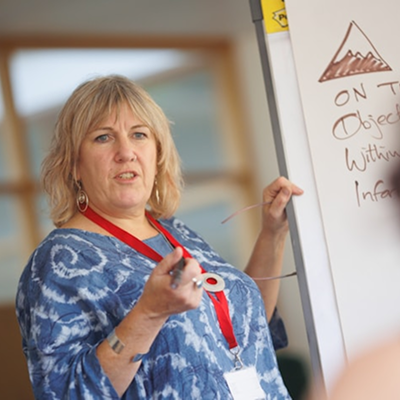

Design
We turned design opportunities into NOTO's core concepts.
Teachers need real-time, hands-free support, smart behaviour logging, reinforced by practical learning and wellness features.
Professional Development
A visual dashboard of bite-sized, relevant, and certification-aligned modules that educators can complete during school hours.
Classroom Management
Real-time classroom tool with data visualization that pulls from student profiles and behaviour logs, offering an overview at a glance.
Smart Documentation
On-the-go raw inputs are distilled into structured outputs for report cards, logs, or communication with caregivers.
AI Assistant
NOTO AI suggests classroom strategies, helps with documentation, or flags helpful professional development modules in a hands-free format.
To address the need for accessible in-the-moment communication and learning, we outlined a desktop platform for administrative actions and a mobile app providing real-time support.
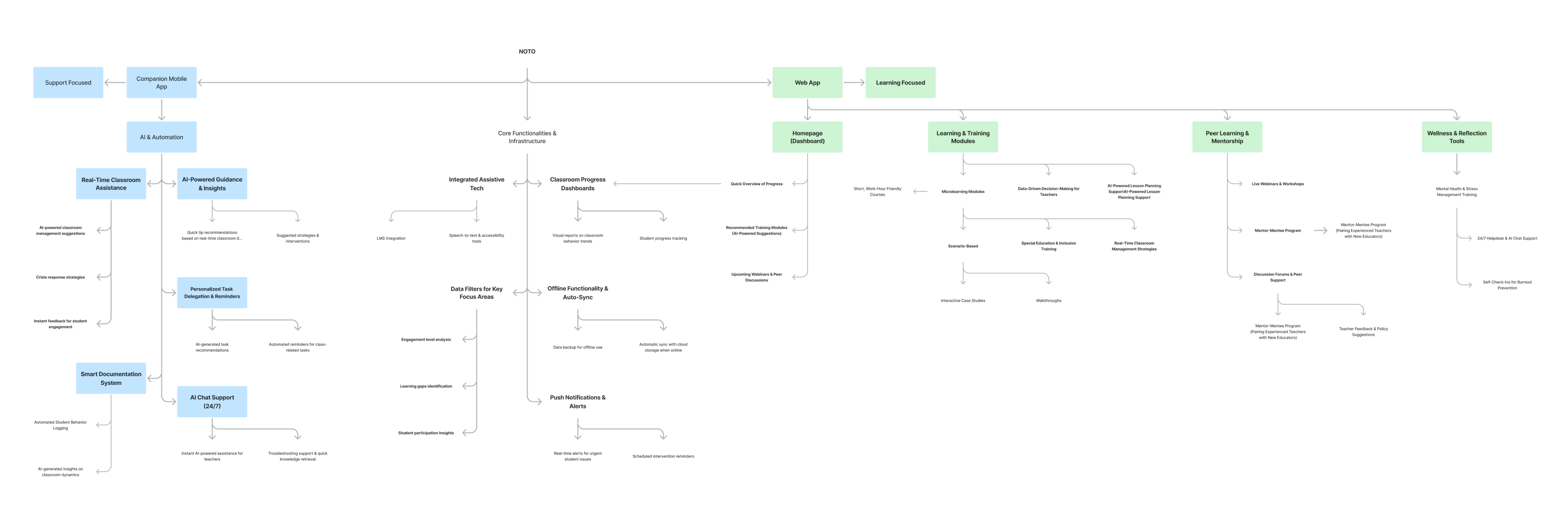
I led the design and testing of the smart documentation feature for the mobile platform. Since this feature needs to be easily accessible, we thought a widget would be the most suitable.
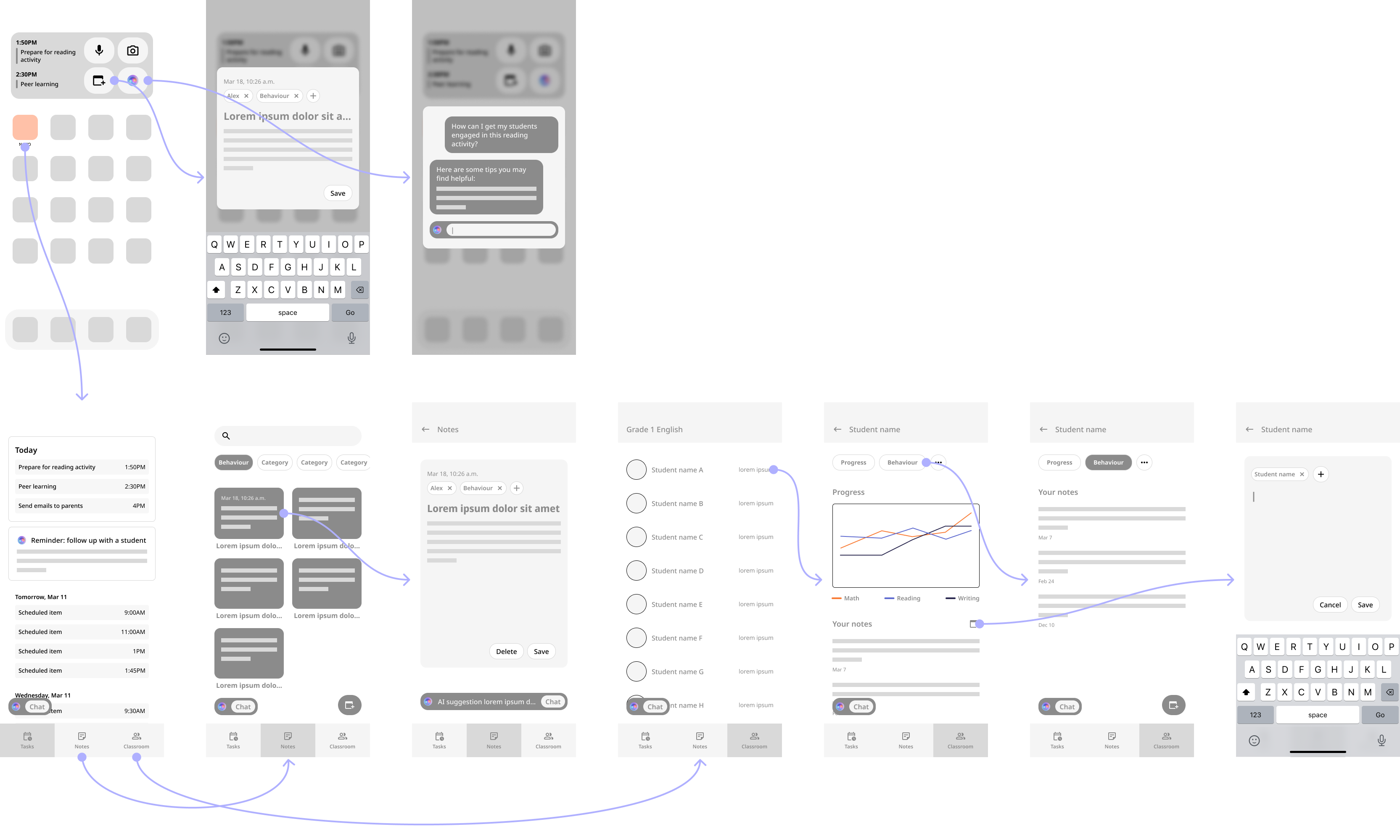
The widget idea was a step in the right direction, but we missed the mark on clarity and use case.
Our first prototype tried to cram many features and information into the widget. Test participants mistook the purpose of icons and didn't know what features were supposed to be represented. We redesigned it to only show the most important features, with proper labels to avoid confusion.

The smart documentation was rebuilt as a brain-dump tool and reworked for tablet-first compatibility.
Many teachers use tablets in their classrooms, so developing this app for tablets is more appropriate than for phones. Our team had the idea to use AI to distill messy inputs into necessary fields, allowing teachers to forego structure when they need to act fast.

As our prototypes were coming together, we adapted the Tailwind component library to fit our visual direction and ensure consistency and efficiency when we built the custom elements we needed.
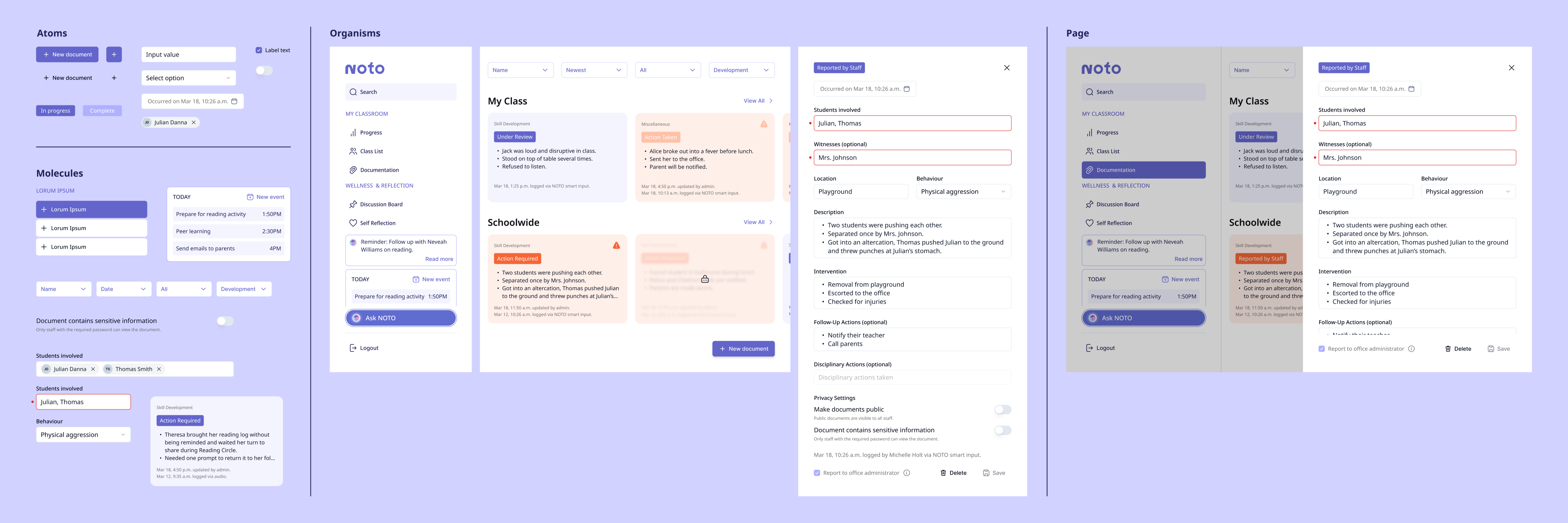
With ready-made components from Tailwind and our customized design system, I built out the remaining UI elements for the tablet platform and worked with other designers to ensure the consistency and accessibility of our desktop and tablet designs.
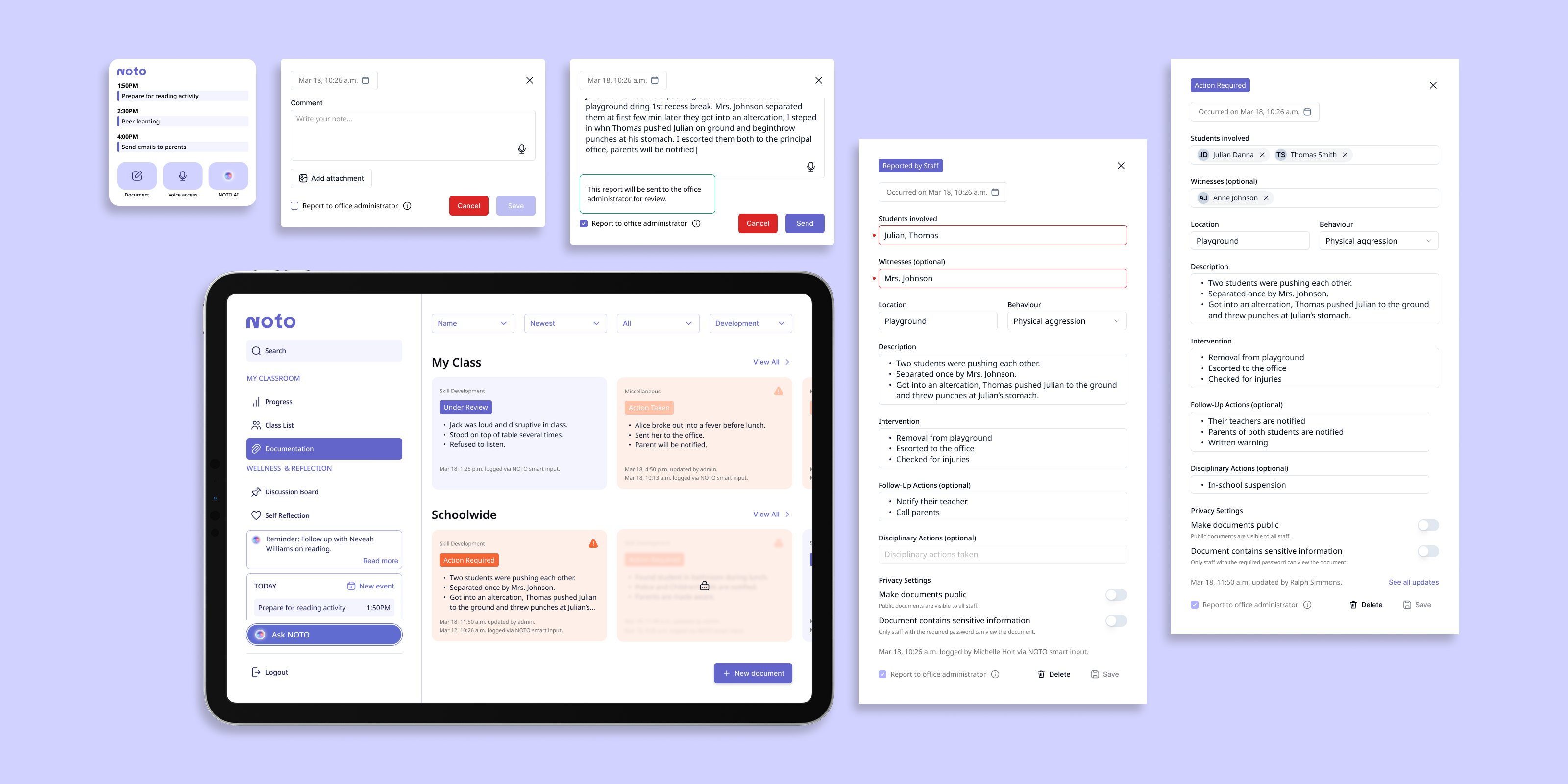
The next step for NOTO is live testing and observation in classrooms to validate what success looks like for educators.
Adoption
Number of active users per school, adoption rate, and admin support for integration will show scalability, institutional buy-in, and sustainability.
Engagement
Usage and frequency of core features will show whether NOTO is intuitive, timely, and integrated into natural classroom flow.
Impact
Time saved on admin tasks and teacher-reported reduction in overwhelm or decision fatigue will show how workload and stress are reduced.
Well-being
Data on voluntary use of Wellness Center, teacher-reported benefit from self-reflection tools, and uptake of peer mentorship.
Reflection
Using design system to increase efficiency
Going into this project, I had a working understanding of components, styles, and variables in Figma, but I didn't have enough experience to leverage them efficiently. I learned from my teammates how to adapt an existing component library and work with variables to design faster and maintain cohesion.
Collaboration with differing strengths and work flows
A crucial reason behind our success in this 4-month project was our trust in each other. Our work flows and opinions didn't always align, but we had a good idea of and trust in each other's abilities. We had a good mix of research, design, and presentation strengths, so we could take a step back and focus on our tasks, instead of worrying about every part of the project.
